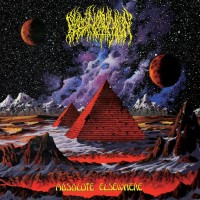Thecodontion - Supercontinent lyrics
 |
Tracks 01. Gyrosia
02. Vaalbara 03. Ur 04. Kenorland 05. Lerova 06. Nuna 07. Rodinia 08. Tethys 09. Laurasia-Gondwana 10. Pangaea 11. Panthalassa 01. Gyrosia
Instant abiogenesis when Gyrosia formed
Microbes near hydrotermal vents Geochemically active environment Rounded tubular cells on a fossilized beach 02. Vaalbara
Lithostigraphic structural arrays reveal
The supercontinent's existence often disputed A three fold stratigraphic similarity leads To reconstructions of ancient latitudes Extensional faults during felsic volcanism Both coeval with impact layers Paleomagnetic data showing igneous complexes Of what could have once been part of the same A pattern found in Precambrian cover sequences Granite greenstone belts show evidence Of meteorite impacts into spherules of glass Akin to lunar soil carbon chondrules Traced in the membrane organelles of eukaryotes Coded in the blue algae of Cyanophyta Molecular clocks and fossil photosynthesis Biomarkers have found their way through rocks To discover the missing Archaean link Between twin transcontinental basins Two cratons drifting apart from each other Across four billions years wide oceans 03. Ur
Protolithic shields once close together
Near each other until the Mesozoic break-up Younger continental assemblage Three of a kind now far apart Up to the Siderian era range When Ur joins Nena and Atlantica On early Earth's archaic tectonics Three worlds collide The Zimgarn hypothesis surfaces Extensive carbonate platforms develop Differing magmatic signatures Primordial magnetism affected Expanding continuing stabilisation Intracontinental within the southern margin Ur, the longest-lived landmass Yet it remains hopelessly obscure 04. Kenorland
Kenorland located at lower latitudes
Until tectonic magma plume rifting The Baltic Shield over the equator Joined to the Canadian forming an unity Its nexus near the Fennoscandian shield Transition point to two-layer core Findings of earlier continents indicate Contradicting adjustment theories During the Siderian and Rhyacian periods Protracted fissures manifested By mafic dikes and sedimentary basins Bimodal deep convection splitting common No longer a supercontinent, a divide At two-point-fortyfive Gya, a breakup Speculation based on the margin Spatial arrangements of Laurentia Drifting assemblies flow together Toward the subsequent amalgamation Southwest and northwest portions Of the Canadian Shield at opposite ends Temperatures plummeting abyssal Banded iron formations indicating anoxia Nevertheless, photosynthesis still unbound Stabilizing climates new levels 05. Lerova
Surface water moving east to west
Warming up from the sunlight Vespertine edge warmer than austral Countless seasons of monsoons 06. Nuna
Proto-cratons containing
The Earth's continental blocks Welded, amalgamated Sutured with orogens Twelve-nine-hundred kilometers Along the north-south axis Four-eight-hundred kilometers Along the east-west axis Mountain range formations South America was rotated Edges extending into The brinks of Scandinavia Outgrowth via accretion Key continental margins Forming a magmatic belt Along southern limits Anorogenic activity Forming anorthosite suits Marked by the emplacement of Igneous northern hemisphere Continental configuration Based on radiating dike swarms Also known as Columbia Nuna, completed by global collisions 07. Rodinia
Her womb was barren
Uncolonized dry land No inhabitants on her interior rings Ultraviolet light hindering life Rainfalls increase volcanic rocks weather Low threshold triggers extreme glaciation Tectonic activity nourishing marine environment Neoproterozoic orogeny unknown longitude Rifts spread to warmer litosphere Ocean floors come up Eustatic water levels rise Parallel shallower seas 08. Tethys
Continuous belt circling around the Earth
Slightly above the Equator Currents running differently Ocean floor buckling under 09. Laurasia-Gondwana
Zero parallel location during the Cambrian
Drifts assemble and break her up Silurian volcanism reforming Laurasia They are coiled close together Iapetus rafts terranes to be added back Neo-Tethys pushes them across the Equator Microcontinents and blocks amalgamate Unknown if they originated on her shores Lycopods invade and dominate the tropics Terrestrial pteridophytes colonize rapidly Baragwanathia flora occurs in two strata Replaced by Archaeopteris and giant moss Rheic closure, ocean currents reroute Gondwana rotates clockwise, Australia shifts South to more temperate coordinates Coal-forming forests form from ice melting Now petrified voltziaelan conifers evolve Extinct glossopterids reach peak diversity Plant-vertebrate-insect ecosystem results Hexapods codevelop, therapsids arrive 10. Pangaea
Plate tectonics paramount in the formation
Of later landmasses and habitats Lifeforms adapt to chasms and earthquakes Shaping the various stages of Pangaea Traversodonts thrived where others struggled Spore plants replaced by gymnosperms Few marine animals known to exist Ammonites, brachiopods, massive reefs Lystrosaurus, Cynognathus and ferns fossils Mesosaurus found in coastal regions Distribution ranging from polar to equator Glacial deposits of the same age and structure Drastic climate change after reconfiguration Warm tropical air and water transfer halted Atmospheric circumpolar currents Antarctica cools down to a frigid state Deterioration of the northern section Contributed to the Permian Extinction Beetles and cicadas wiped away Acid oceans dissolving benthic species 11. Panthalassa
Hemisphere-sized ocean
Gigantic single-celled organisms Trade winds create westward flows Four currents of subtropical gyre |



